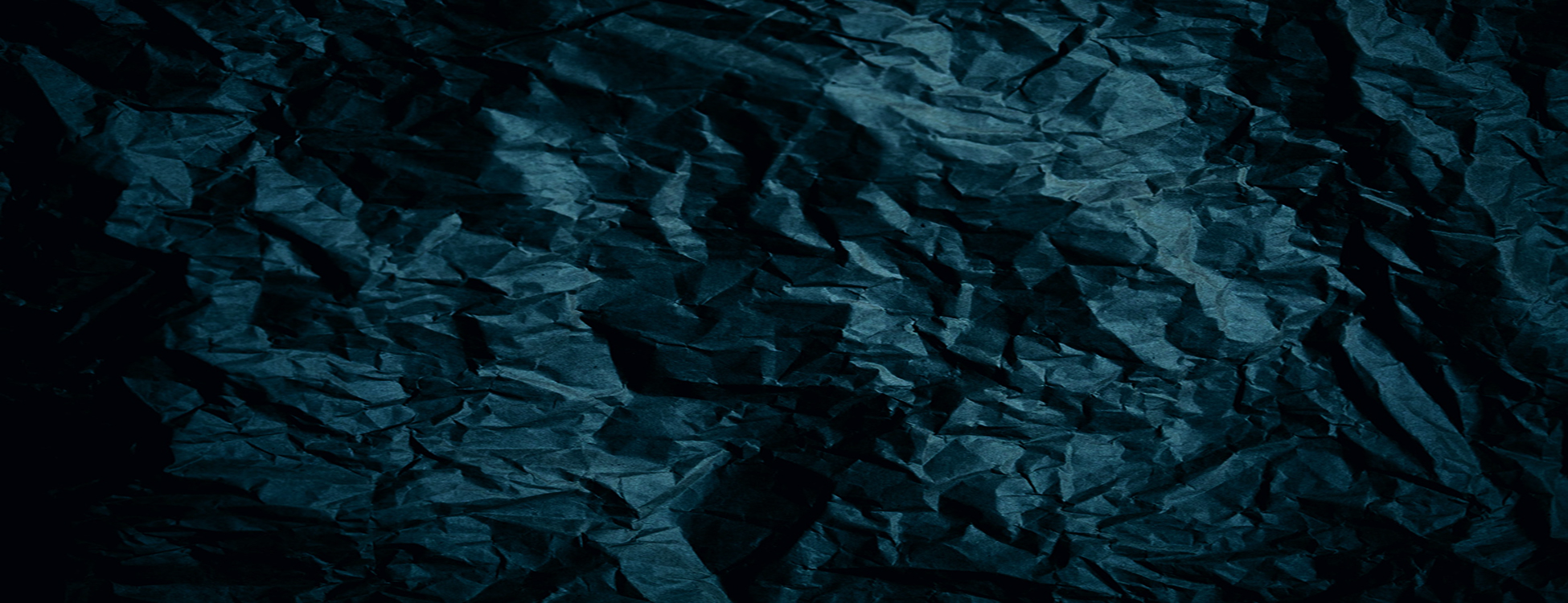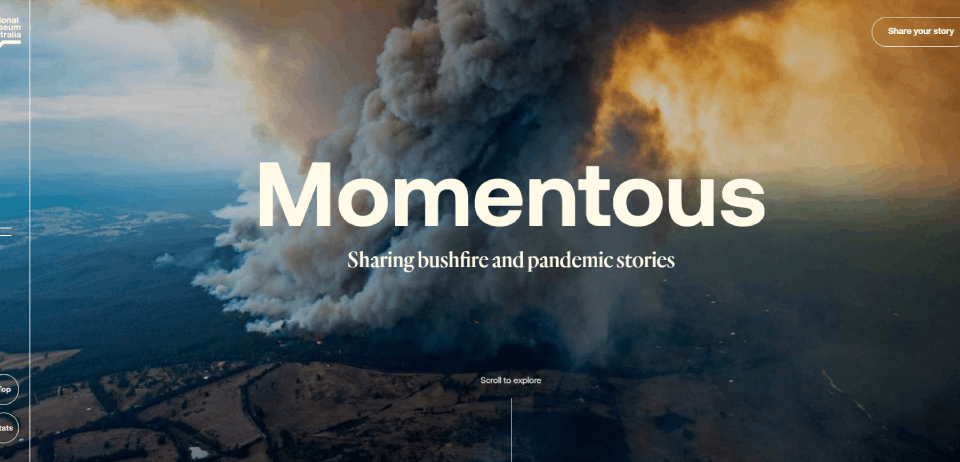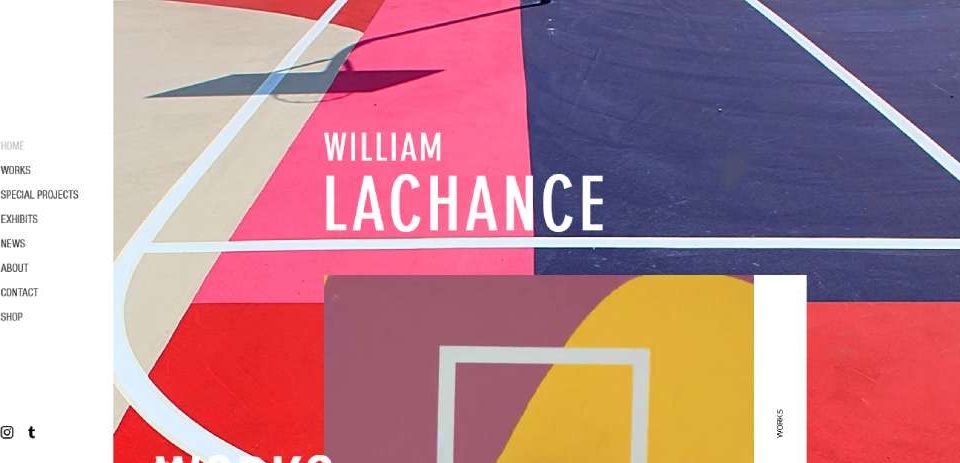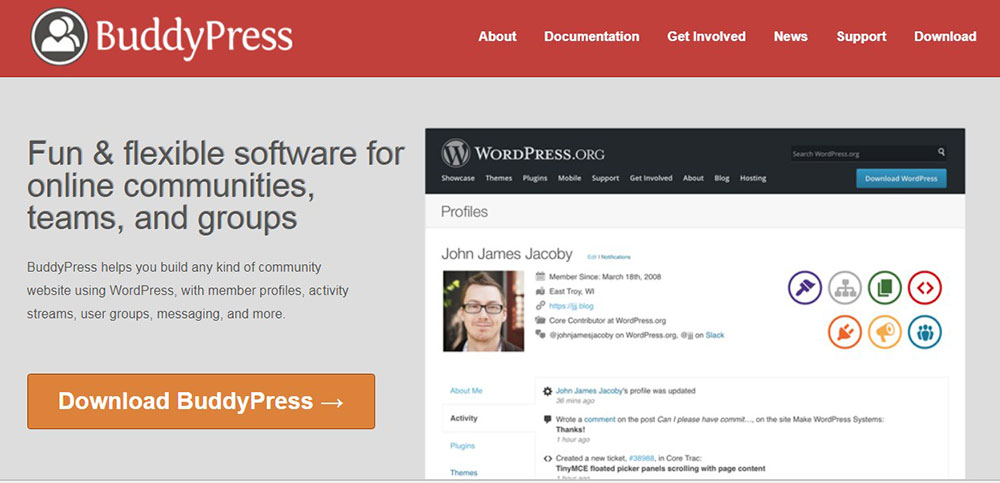
bbPress vs BuddyPress: Which one should you opt for?
July 15, 2024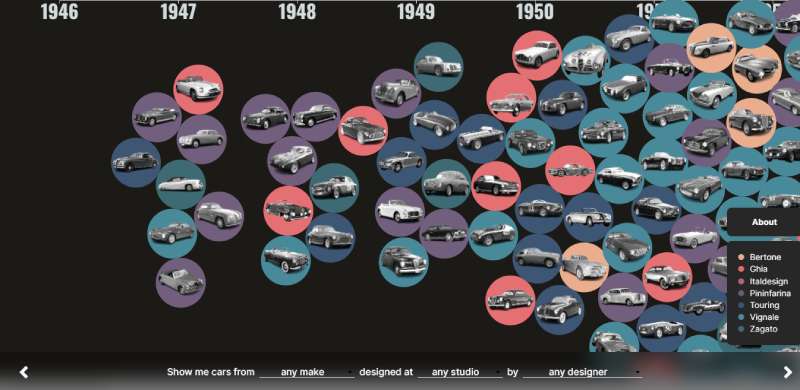
Captivating Automotive Website Design Examples
July 18, 2024Social media colors are more than just a design choice—they are a vital part of your brand’s visual identity and marketing strategy. Colors like Facebook's blue, Instagram's vibrant gradient, or YouTube's bold red are not random; they are carefully chosen to evoke specific emotions and reactions. Understanding the psychology behind these hues can significantly boost your brand consistency and user engagement.
In today’s digital age, where the visual content strategy is paramount, mastering the right color schemes can distinguish your brand from competitors. This article delves into various aspects of social media colors, from color psychology to branding guidelines. By the end, you’ll grasp how to use visual hierarchy and color palettes to create compelling social media graphics that align with your brand's identity.
Expect insights into the latest color trends, practical tips on using tools like Canva, and ways to ensure brand consistency across platforms like Instagram, LinkedIn, and Twitter.
Social Media Colors
| Platform | Primary Color | Hex Code | Description |
|---|---|---|---|
| Blue | #1877F2 | A calm, trustworthy blue representing security and reliability. | |
| Gradient | #E4405F | A vibrant gradient combining pink, purple, and orange. Represents creativity and diversity. | |
| Blue | #1DA1F2 | Light blue symbolizing openness and communication. | |
| Blue | #0077B5 | A professional blue indicating trust and reliability. | |
| YouTube | Red | #FF0000 | A bold red evoking excitement and passion. |
| Red | #E60023 | Energetic red signifying enthusiasm and action. | |
| Snapchat | Yellow | #FFFC00 | Bright yellow representing fun and positivity. |
| TikTok | Multicolor | #000000 | Black, white, and neon colors portraying modernity and vibrancy. |
What is the meaning of the colors on social media?
Color is ubiquitous on the Internet because of the power it has on people’s minds. The first message a website carries is sent to the user through color. You can make people joyful, entertain them, build a mystery, or simply, make their eyes rest on your website. Color means connection.
The article “Impact of Color on Marketing” agrees with this assertion stating that between 62 to 90% of visitors assess their first experience on a new website “based on colors alone”. Think about some social media colors, and you will immediately associate them with a brand.
Colors can trigger feelings and marketers know this, which is why they rely on colors to create emotions. You can also use color psychology when building your brand image as well as subtly persuade your market to support your brand.
So what is the meaning of social media colors? What feelings do they arouse? And how is a customer’s mind used to build brand awareness?

- RED: This color is about passion and everything related to it – love, excitement, energy, power, sex. Depending on the cultural viewpoint it can also represent purity,fire or a stylized image of war, danger, blood, tension, and communism.
- BLUE: The color of the sky promotes feelings of serenity, calm, and Therefore, blue can transmit trust and confidence, truthfulness, and dependability.
- GREEN: As the color of life, green means health, abundance, vitality, and good luck
- YELLOW: This is the color of light, enlightenment, hope and engagement with the light. Yellow is also associated with liberalism, sociability, wealth, and friendship between nations.
- WHITE: A clear white signals purity, innocence, and tranquillity.
- BLACK: The absence of color signifies emptiness, darkness, and the unseeable, which encourages thoughts ofmystery and nihilism, as well as sorrow, evil, and the absence of life.
- GRAY: This color shares a little of the significance of both black and white, with anextra touch of elegance, wisdom, and It’s balanced and neutral, generating respect and stability.
- ORANGE: Mixing red and yellow achieves a sense of warmth, passion and playfulness as well as fire and desire.
- BROWN: This color is on the border of conservatism, tradition, and a rustic boldness. It signifies calmness and simplicity, as well as being the color of the earth.
- PINK: Pink depicts sympathy, femininity, love, and even childlike simplicity.
- PURPLE: Purple is the color of mystery, enlightenment, and sensuality,as well as pride and nobility.
The most popular social media colors
Each color is defined by a HEX color code and specific RGB values. Big brands usually choose one main color shaded by secondary tones.
These are the colors of the biggest social media companies:
The Twitter blue HEX code

Twitter’s color’s have coherence.Their mascot is the light-blue bird with bright blue as the main color, and some other shades of blue for the background, making it easily recognizable.
Blue promotes a feeling of trust and reliability, therefore Twitter wants to gain your trust and find them indispensable.
Build the Twitter blue with this HEX code:

Twitter Dark Blue
Hex: #0084b4
RGB: 0, 132, 180
Twitter Logo Blue
Hex: #00aced
RGB: 0, 172, 237
Twitter Verified Blue
Hex: #1dcaff
RGB: 29, 202, 255
Twitter Background Blue
Hex: #c0deed
RGB: 192, 222, 237
Facebook blue -HEX code and meanings

Facebook may seem to use the same blue color as Twitter, but actually it has a diverse color palette, using grey, black, and white as well.
It’s not difficult to combine these four colors and creatively design them for personal projects. If you decide on these colors, here are the codes you need:

Blue
Hex: #4267B2
RGB: 66, 103, 178
Grey
Hex: #898F9C
RGB: 137, 143, 156
Black
Hex: #000000
RGB: 0, 0, 0
What is the YouTube red color code?

YouTube’s successful color combination of dark red, black, and white easily attracts attention, so you might want to take advantage of these HEX color codes for personal projects, however, copyright issues prevent their use for commercial purposes.
Red
Hex: #ff0000
RGB: 255, 0, 0
Almost Black
Hex: #282828
RGB: 40, 40, 40
White
Hex: #ffffff
RGB: 255, 255, 255
Instagram color code
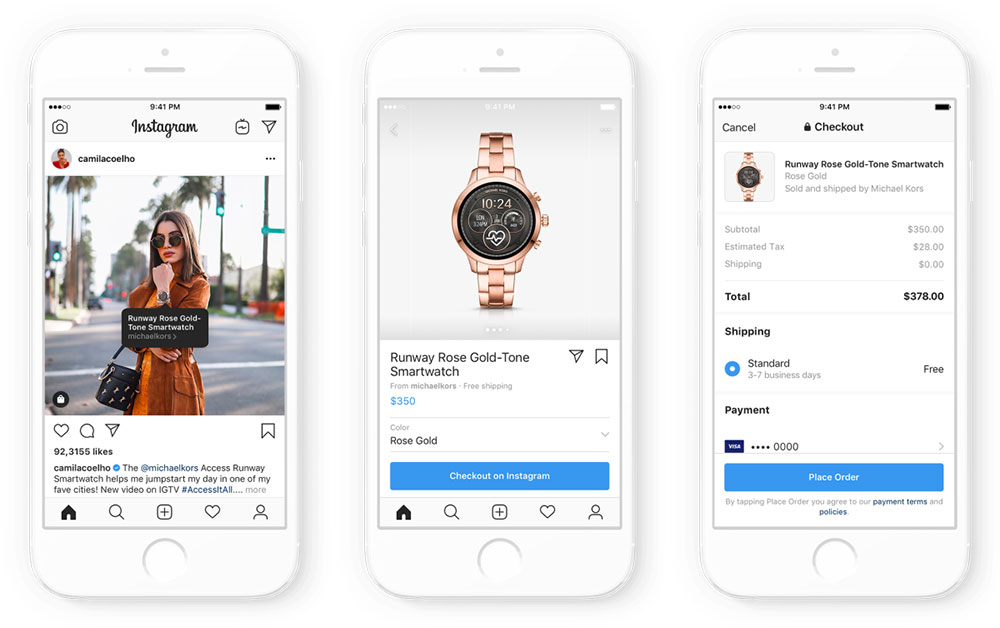
Instagram has a more colorful identity, utilizing royal blue, blue, purple, dark pink, orange, and yellow.
These Instagram HEX codes may also only be used for personal purposes.
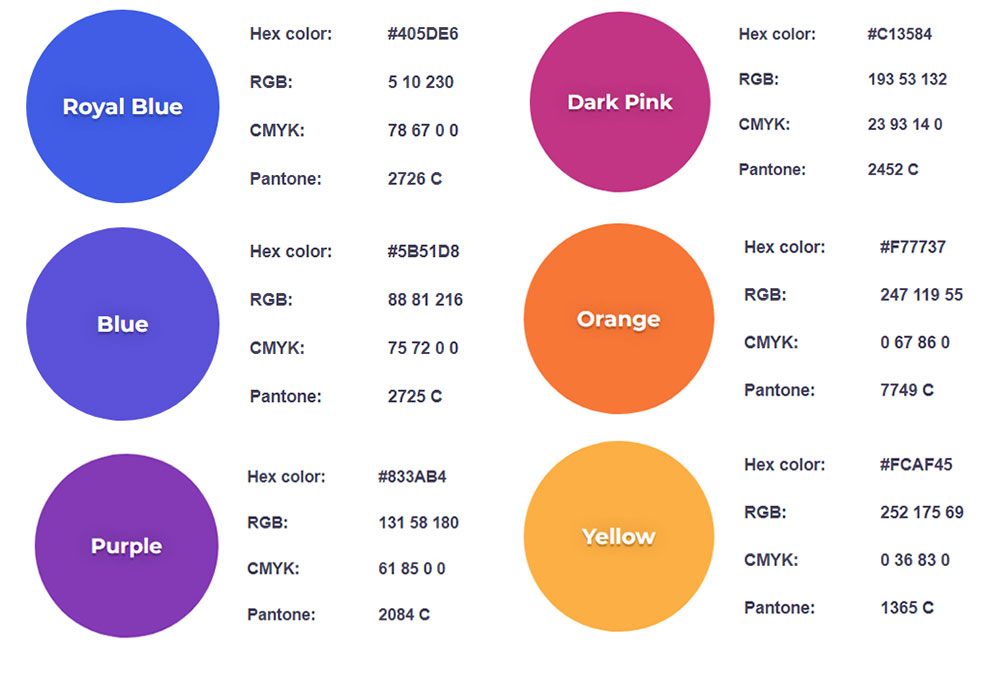
Royal Blue
Hex: #405DE6
RGB: 5, 10, 230
Blue
Hex: #5B51D8
RGB: 88, 81, 216
Purple
Hex: #833AB4
RGB: 131, 58, 180
Dark Pink
Hex: #C13584
RGB: 193, 53, 132
Orange
Hex: #F77737
RGB: 247, 119, 55
Yellow
Hex: #FCAF45
RGB: 252 175 69
Pinterest color code

The representative Pinterest color is pink-red, defined by the HEX code #c8232c. This equals the proportion of 78.43%, 13.73%, and 17.25% in the RGB scale.
What is the LinkedIn color code?
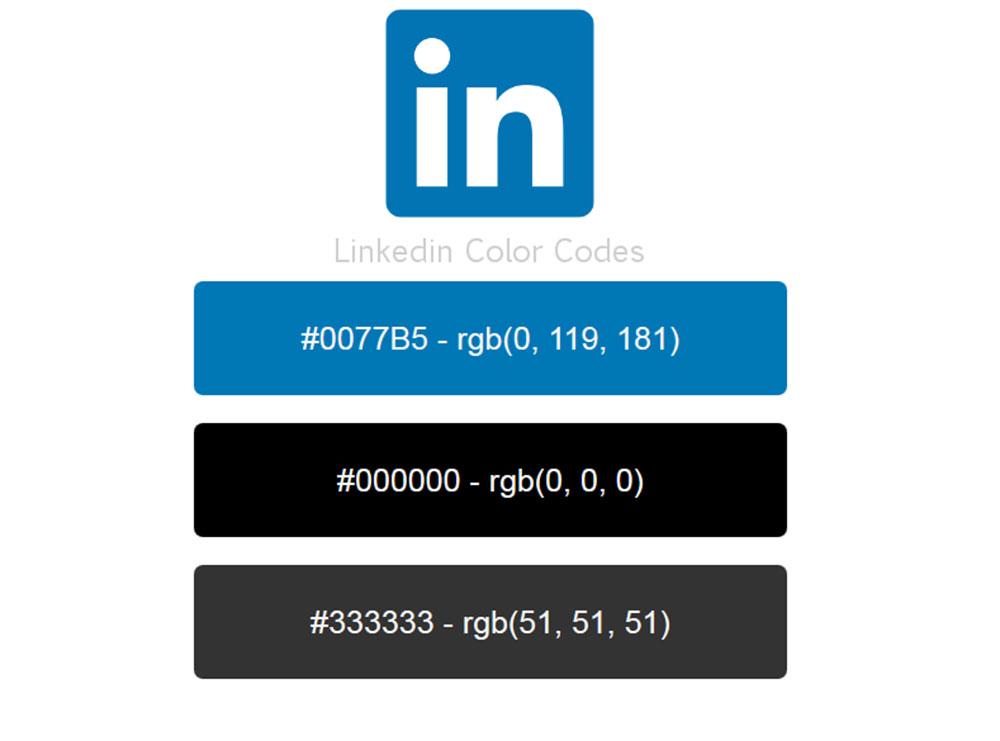
LinkedIn uses blue and white to build a sedate and serious image on the Internet, seen in both the website and logo.
This isn’t the same blue from Facebook or Twitter. It is defined by the HEX code#0072b1, and has no red, only 44.71% green and 69.41% blue.
Snapchat yellow HEX
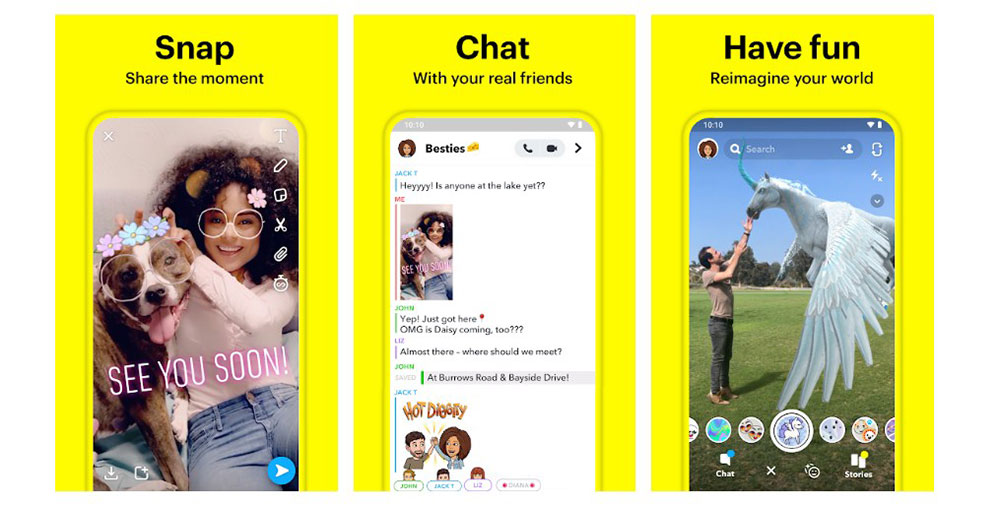
The bright and appealing yellow from Snapchat is very recognizable. Here is the code that will help you build it:
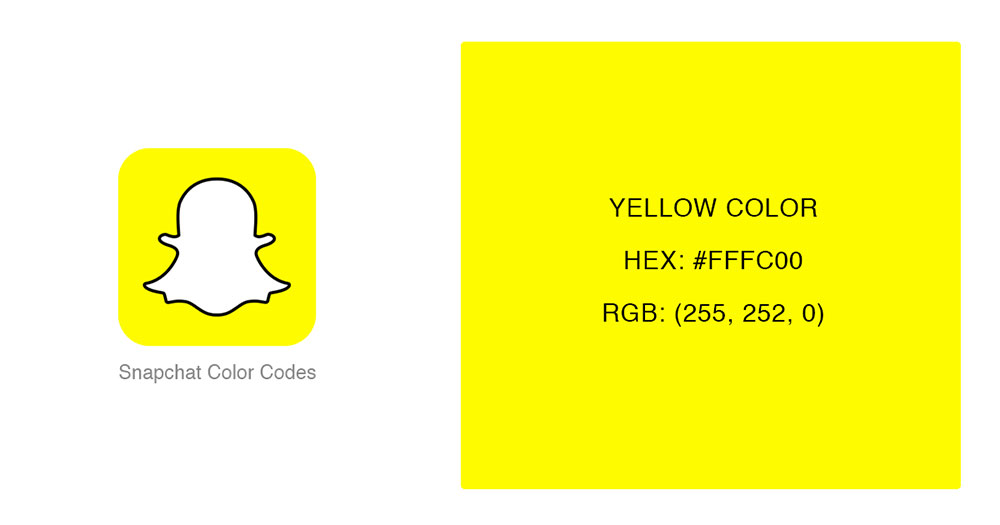
HEX: #FFFC00
RGB: 255, 252, 0
Tumblr
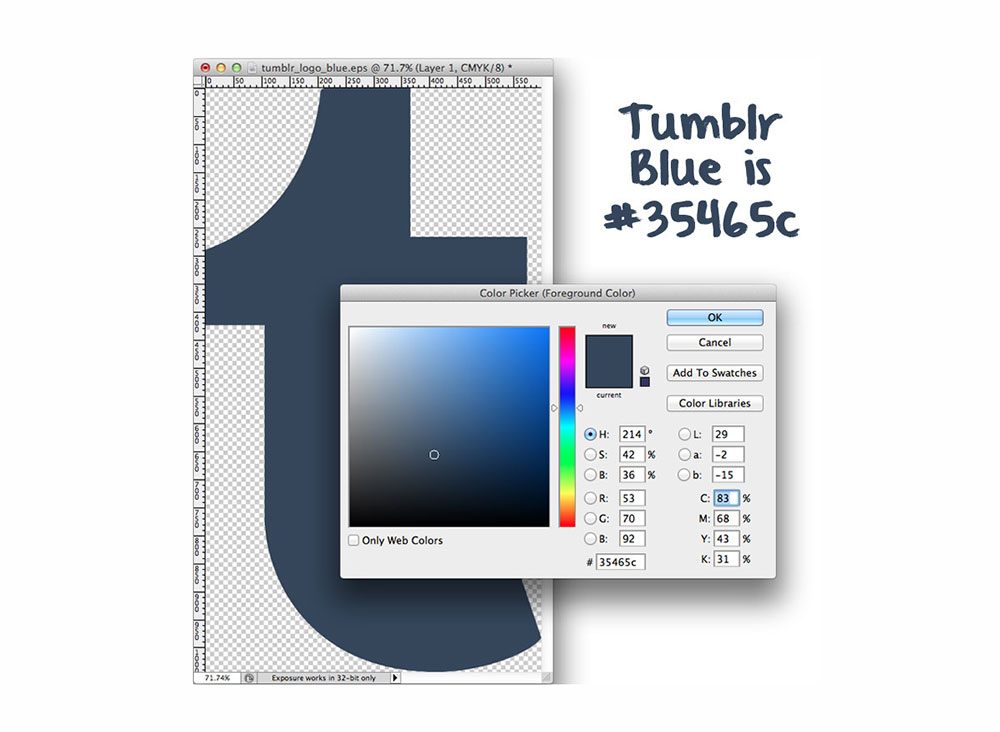
Tumblr uses an aesthetically pleasing special blue-gray color that you might want to imitate. Here is the code:
Blue
Hex: #35465d
RGB: 54, 70, 93
Reddit color code

The color of the Reddit robot and its surrounding orange background are memorable. The code of the vivid Red-Orange is(X11) (#FF4301).
If you want to use the other two official colors of the website, white and black, use the following codes:

Black (#000000);
White (#FFFFFF)
FAQ about social media colors
What role do colors play in social media branding?
Colors are crucial in defining brand identity. They evoke emotions, communicate your brand's message, and enhance recognition. For example, Facebook’s blue conveys trust, while Instagram's gradient stimulates creativity. Using the right color schemes can boost user engagement and make your digital branding stand out.
How do I choose the right colors for my social media?
Start with your brand color palette and consider color psychology. Understand your target audience's preferences. Tools like Canva can help you experiment with different color schemes to see what fits best. Consistency is key for brand recognition across platforms like Instagram and Twitter.
Why are consistent colors important for social media?
Consistent colors ensure brand visibility and recognition. When users see your colors, they automatically think of your brand, just like YouTube's red or Snapchat’s yellow. Consistency across all social media platforms helps maintain brand loyalty and trust, enhancing your overall visual identity.
Should different social media platforms use different colors?
Stick with your core brand colors for consistency. However, minor tweaks can be made to fit the platform's design and audience. For instance, LinkedIn might need a more professional shade of your brand color, whereas TikTok might allow for more vibrant variations to appeal to a younger crowd.
How does color psychology impact social media engagement?
Colors trigger different emotions. Blue conveys trust and calm, red evokes passion and energy, and yellow symbolizes positivity. Using visual hierarchy and the right color palettes, you can strategically influence user engagement and boost the effectiveness of your marketing visuals.
Can colors improve social media performance metrics?
Yes, the right colors can improve engagement metrics like click-through rates and impressions. Vibrant colors can grab attention, while contrasting colors can highlight calls-to-action. By leveraging color psychology and visual content strategy, you can see a significant boost in your social media performance.
What tools can help in selecting social media colors?
Tools like Adobe Photoshop and Canva are excellent for experimenting with color palettes and designs. PANTONE can help with standardized color matching. These tools assist in creating visually appealing content that maintains brand consistency across all social media platforms.
How can I ensure my social media colors are accessible?
Use high-contrast color combinations to ensure readability. Tools like Canva offer accessibility guidelines. Check for color blindness compatibility as well. Ensuring accessibility not only broadens your audience but also enhances user engagement and brand loyalty.
What are the latest color trends in social media design?
Currently, vibrant gradients, such as those used by Instagram, and neon tones seen in TikTok are trending. Minimalist designs with bold, high-contrast colors are also popular. Staying updated with color trends can keep your social media graphics fresh and engaging.
How do color trends differ across various social media platforms?
Different platforms have different identities. LinkedIn sticks to professional and muted tones, while TikTok uses vibrant and energetic colors. Tailor your color strategy to fit the platform’s audience without straying too far from your core brand colors to maintain consistency and brand recognition.
Conclusion
Mastering social media colors is essential for any brand aiming for a strong online presence. The right color schemes boost user engagement, enhance brand identity, and improve overall marketing effectiveness. Using color psychology and visual hierarchy, you can target the emotions and actions you want to elicit from your audience.
With the help of tools like Canva and Adobe Photoshop, experimenting with your color palette becomes easier and more precise. Platforms like Instagram, LinkedIn, and Twitter all offer unique opportunities to apply these strategies, ensuring your brand stands out.
Consistency across all social media platforms ensures strong brand recognition and loyalty. Incorporating these insights into your content strategy allows for adaptable and engaging designs that keep up with color trends.
To sum up, mastering the art of social media colors not only bolsters your digital branding but also creates a cohesive and compelling visual presence that resonates with your audience.
If you liked this article about social media colors, you should check out this article with colorful websites.
We also wrote on similar subjects like websites with a yellow color palette, purple color palette, blue websites, red websites, pink websites, orange websites, and websites with a calm color palette.
